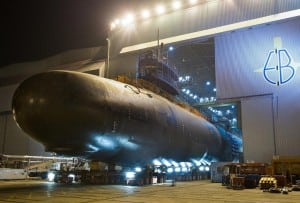
NATIONAL HARBOR, Md. –The Navy signed off on the specifications of the Ohio-replacement ballistic missile submarine in the first week of April, giving program officials six and a half years before construction of the lead ship to refine the design and continue lowering the cost to its “should-cost” goal of $4.9 billion per boat. Ohio-replacement program manager Capt. William Brougham said during a briefing at the Navy League’s annual Sea Air Space conference that he had hoped to finish the…













